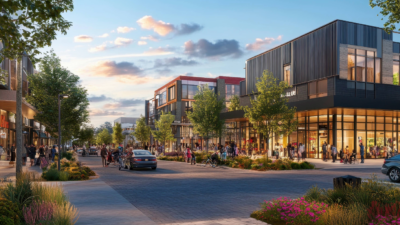Managing the real estate assets for a healthcare system has always been a challenge, but in the post-COVID world, this task has become even more complex. As the leader of a team focused on providing real estate and facilities management for a regional healthcare system, I’ve seen firsthand how the landscape has shifted.
The New Financial Landscape
Pre-Covid, hospital margins were around 3%, but now operating margins are hovering in the1% to 2% range, representing a “pain point” for the sector per Healthcare Dive.
Changes in the health system labor markets, increased competition, and reimbursements not keeping pace with rising costs have put financial pressure on many health systems. Many are now forced to scrutinize every expenditure, ensuring that investments yield the highest possible returns in terms of patient care and operational efficiency.
Despite these challenges, health systems continue to move forward with significant initiatives to expand services, including major facility expansions for essential service lines. These expansions are critical for meeting the growing demand for healthcare services and improving patient outcomes. However, these capital-intensive projects have left limited resources for other smaller, yet crucial, needs such as major equipment replacement (e.g., HVAC systems, elevators, and parking lots) and redecorating existing facilities.
The Importance of Strategic Capital Planning
In this challenging financial environment, capital planning has taken on a new level of importance. Each dollar must be examined carefully to ensure the health system can continue to provide high-quality care while maintaining its facilities. This has led to more eyes scrutinizing the capital planning process, with various stakeholders involved in decision-making to ensure transparency and optimal use of resources.
One of the key challenges is managing the drift of capital-like expenses into operating expenses. This often happens when there is a need to address urgent maintenance issues or replace critical equipment that cannot wait for the next capital budget cycle. While this approach may keep facilities operational in the short term, it can strain the operating budget and lead to longer-term financial challenges.
Balancing Major Initiatives with Day-to-Day Needs
Balancing major capital initiatives with the day-to-day operational needs requires careful planning and strategic prioritization. For instance, while expanding facilities for essential service lines is crucial, it’s equally important to ensure that existing facilities are well-maintained, and that equipment is up-to-date.
To navigate these challenges, our team employs a multi-faceted approach. This includes:
- Comprehensive Needs Assessment: Regularly assessing the condition of facilities and equipment to identify and prioritize needs. This ensures that the most critical issues are addressed promptly, while also planning for future requirements.
- Stakeholder Engagement: Involving various stakeholders in the capital planning process in order to gain diverse perspectives and ensure that all needs are considered. This collaborative approach helps make more informed decisions.
- Innovative Funding Solutions: Exploring alternative funding options, such as public-private partnerships, grants, and donations, to supplement limited capital budgets. These solutions can provide much-needed resources for smaller projects that might otherwise be deferred.
- Efficiency Improvements: Implementing measures to improve operational efficiency, such as energy-saving initiatives, to reduce costs and free up funds for other needs. This not only helps in managing the budget, it also aligns with sustainability goals.
By prioritizing needs, engaging stakeholders, exploring innovative funding solutions, and improving efficiency, healthcare systems can continue to provide high-quality care while managing financial constraints. As we move forward, the lessons learned during these challenging times will undoubtedly shape a more resilient and adaptable healthcare system.

 Ted McKenna
Ted McKenna

 Shawn Janus
Shawn Janus
 Malcolm Randolph Jr.
Malcolm Randolph Jr.
 Brian Bruggeman
Brian Bruggeman